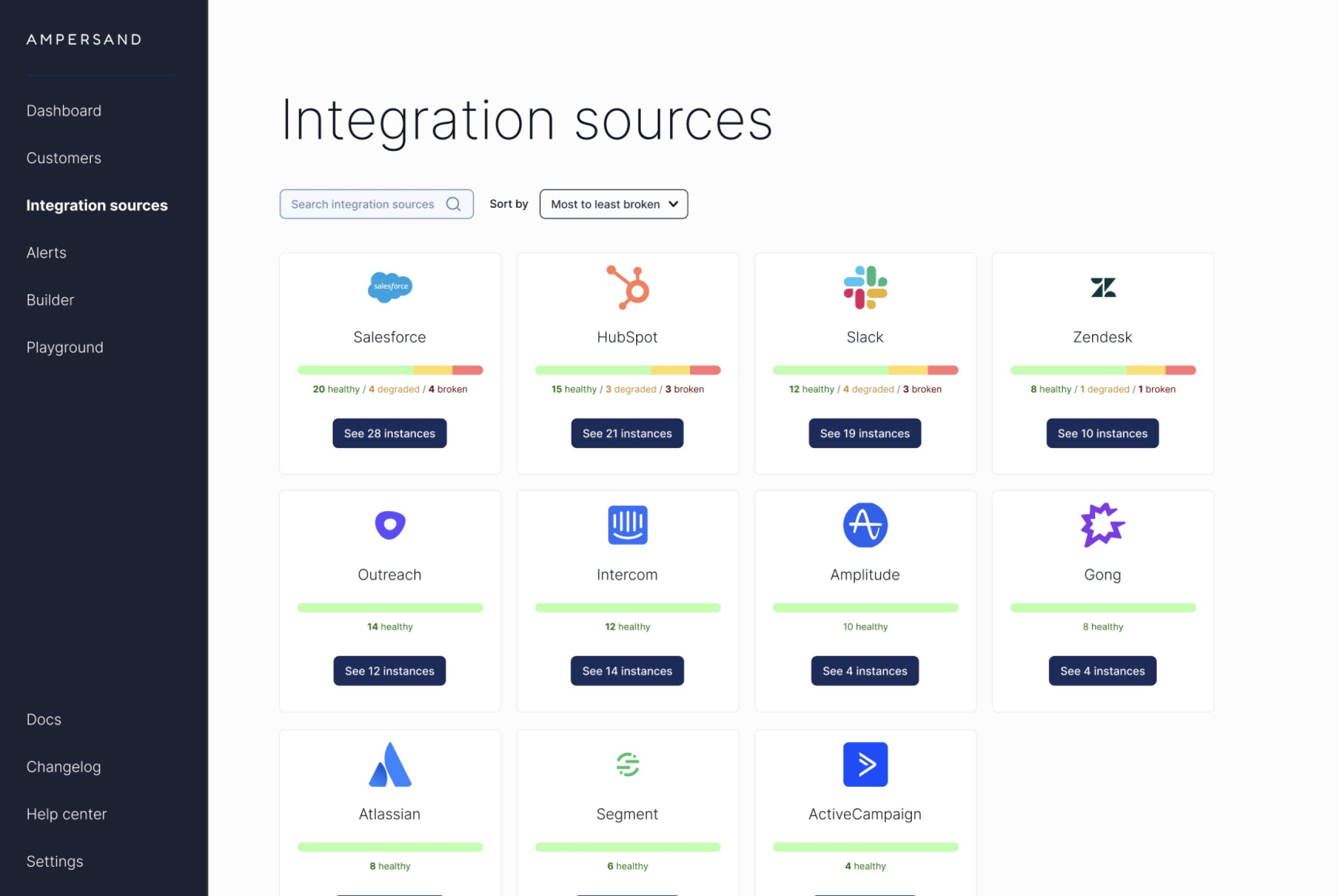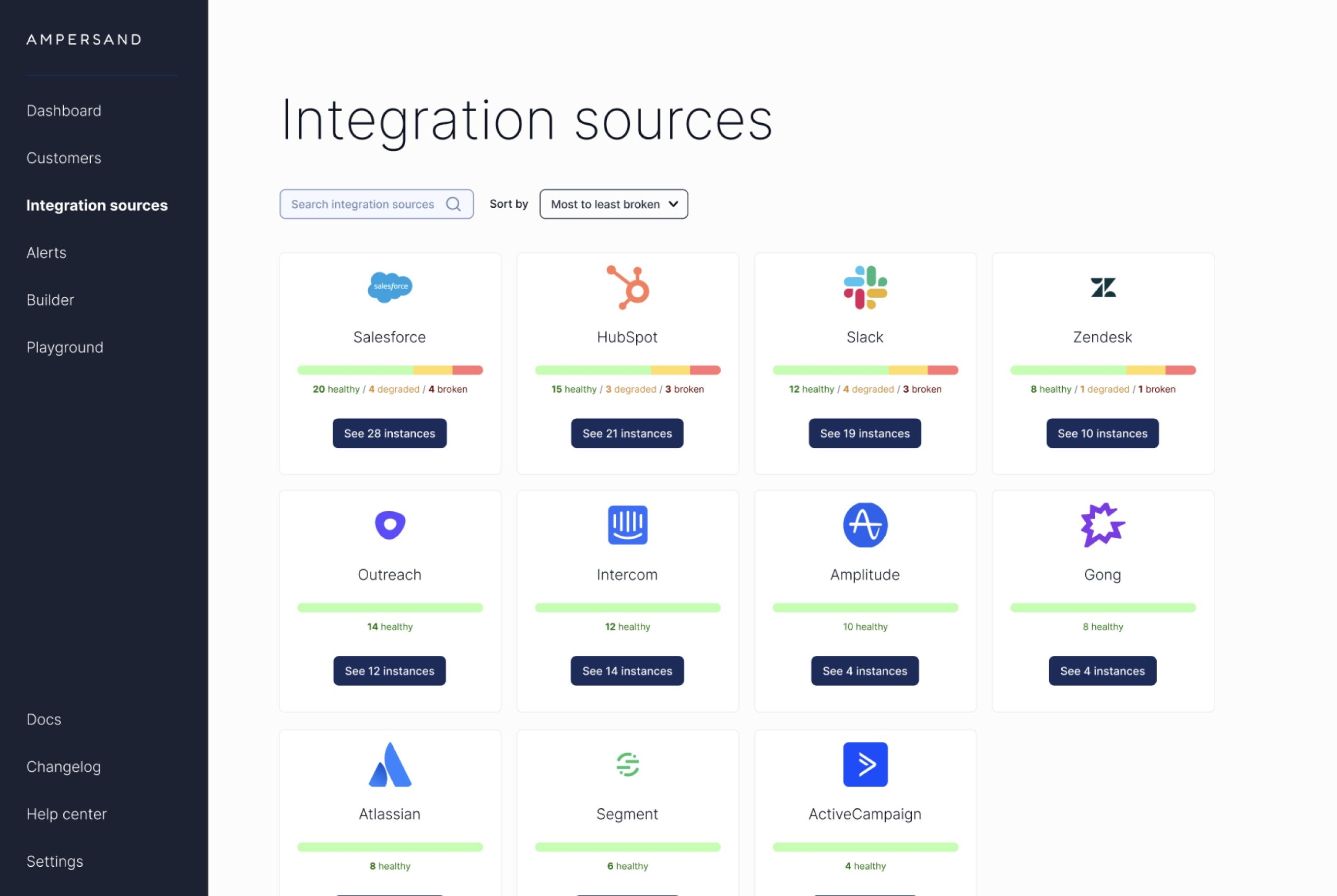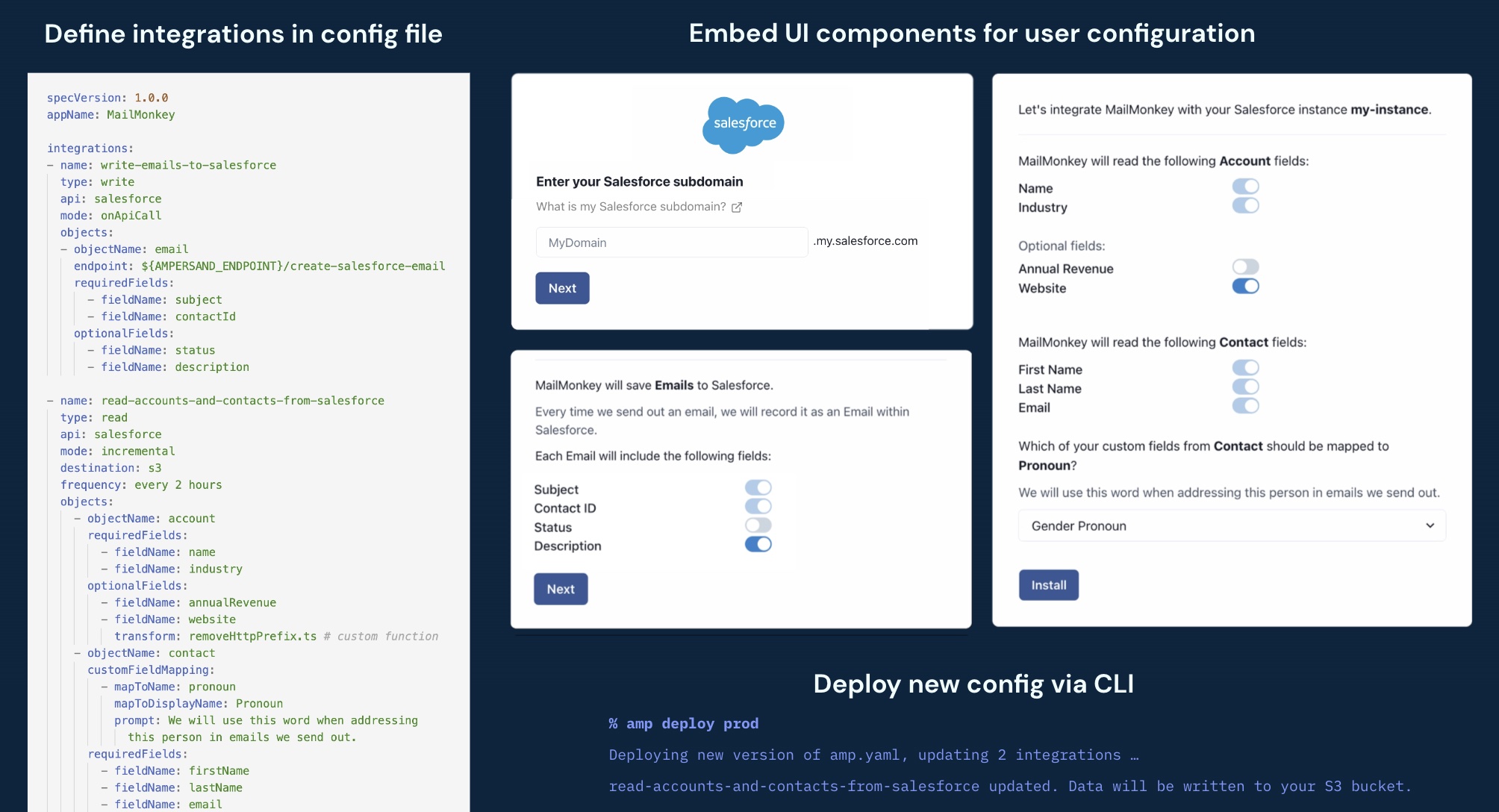
Ampersand helps SaaS companies build their customer-facing integrations, raises $4.7M
Ampersand, a startup that helps SaaS companies build user-facing integrations into their products, today announced that it has raised a $4.7 million seed funding round led by Matrix Partners. Base Case Capital, Flex Capital and 2.12 Angels also invested, along with numerous prominent angel investors.
Today’s SaaS products, Ampersand co-founders Lauren Long and Ayan Barua noted, usually begin as systems of engagement that build intelligence and workflows on top of multiple systems of records. Those systems of records are all great database systems but they typically don’t have great interfaces for building on top of them.
“If you look at the databases on top of which a lot of SaaS has built itself, the pipe into a system of record is literally table stakes for your product experience,” said Barua, who was previously the VPE of G2 and also the co-founder and CTO of Siftery. However, these systems of records are often heavily customized — configurability is part of their appeal, after all — which then makes it a lot harder to integrate with them.
“Ampersand is a code-first platform that lets engineers add user facing integrations to their SaaS apps,” explained Long, who previously led the Firebase Extensions product at Google and also worked at email startup Shortwave. “We are not a unified API. We offer a much more flexible and customer-configurable experience than unified APIs.”
This means developers have to set up a configuration file, set up their desired data fields and set up the configuration options for these integrations for their own end customers. Long compared this approach to the granular control engineers have over their infrastructure with the popular automation service Terraform.
“We’re providing a declarative interface for integrations,” she said.
Developers can also set up transformation functions and convert the incoming data to a schema of their choosing. The company also offers embeddable UI components that engineers can use in their apps for the user-facing management experience, as well as a dashboard that helps companies monitor and troubleshoot their customers’ integrations and helps in managing end-user configurations when necessary.
“We want to offer tools for the entire lifecycle of the integration from development to testing to the management,” Bond said.
The company currently has a number of design partners, with plans to monetize the service within the next two quarters.
“The evolution of software has given way to new efficiencies and increased productivity for businesses – but it’s also accompanied by a new set of integration challenges, where the burden falls directly on engineering teams,” said Patrick Malatack, Partner at Matrix, “Ampersand provides the crucial connective tissue for the next generation of software companies, which is why we’re thrilled to be investing in this incredible team, mission, and technology.”



